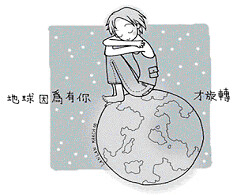8 Month Old's Development
Sitting, crawling, and standing
Now that he's 8 months old, your baby is probably sitting well without support. He may also be crawling or moving about by bottom shuffling — scooting around on his posterior using a hand behind him and a foot in front of him to propel himself. While holding on to furniture, he may pull himself up to a standing position. In fact, if you stand your baby next to the sofa, he may be able to hold himself up, hanging on for dear life. At this stage some parents put their children in baby walkers, but that's not a good idea. Walkers are unsafe. Your child can use a walker as a stepladder to reach things he couldn't normally get to, such as a hot stove or bottle of bleach. What's more, they discourage the kind of floor play that's best for your child's development.
Your baby's newfound mobility means that he's now entering the land of bumps and falls. These are an inevitable part of childhood, and although your heart may occasionally skip a beat or two, try to enjoy watching your baby explore his surroundings and discover his limits. Restraining your innate desire to protect your child allows him to grow and learn for himself. However, do make every effort to make your home safe for your child. Secure fragile objects (so they won't topple), for example, and keep rickety furniture in rooms that don't get much baby traffic.
Using his hands
Your baby may start looking for dropped objects and use his index finger to point at them. He can easily use his fingers to rake up a piece of food and hold it with his fist closed, and he's learned to open his hand and fingers to drop and throw objects. He's probably beginning to master the pincer grasp, too: the delicate maneuver that lets him pick up small objects with his thumb and first and second fingers.
Getting more emotional
By now your baby's emotions are becoming more obvious. He may perform tricks, such as throwing a kiss to familiar people, and may repeat his act if applauded. Over the next few months, your child may learn to assess and imitate moods and might show the first stirrings of empathy. For instance, if he sees someone crying, he may start crying, too.
Dealing with separation
Most babies this age have already begun to show signs of separation anxiety. Your baby may start to be shy or anxious around strangers, especially when tired or cranky. And when you're out of sight and not with him, he might become upset. Although it's hard to see your baby distressed, it's important to let him experience your comings and goings.
When you leave your baby and return, proving that you always come back, you're helping him develop trust and the ability to form attachments to other people.When you leave your baby, kiss and hug him and tell him you'll be back. If he's frightened or just falls apart, take the extra time to calm and reassure him. It's hard not to cry when he starts crying, but your breaking down only prolongs the agony. It may help to have someone else he's familiar with (not a new babysitter) there to calm him. If your baby gets anxious about nighttime separations, spend some extra cuddle time reading, snuggling, and softly singing together with him before you put him to bed.
Some babies are better at separations than others — it depends on their temperament. Every child is different, as is the amount of reassurance each needs. If you know your baby needs more calming, don't feel bad about giving it or worry that you're just drawing out the process: You know your child better than anyone else, so follow your instincts.
Exploring objects
Most babies now explore objects by shaking them, banging them, dropping them, and throwing them before falling back on the tried-and-true method of gumming them. The idea that you do something to an object is beginning to emerge, so an activity center with lots of things your baby can bang, poke, twist, squeeze, shake, drop, and open will fascinate him. At this stage, babies like to see things fall down, get picked up (by you, of course), and then get thrown down again. Your baby isn't trying to goad you with this cycle; he just finds the spectacle interesting and naturally wants to see it again and again.
Your baby now understands how objects relate to one another, too. For example, he realizes that smaller things fit inside bigger ones. He'll also easily find something you hide. And over the next few months, he'll start to use objects for their intended functions — brushing his hair, drinking from a cup, and babbling on his play phone. Watch for him to start pointing or looking at the correct picture when you name an object, too, — especially if it's something familiar (such as eyes, nose, or mouth) or beloved (like a dog or a rubber ducky).
Improving vision
Your baby's vision — previously about 20/40 at best — is now almost adult-like in its clarity and depth perception. Though his short-range sight is still best, his long-range vision is good enough to recognize people and objects across a room.
Is my baby developing normally?
Remember, each baby is unique and meets physical milestones at his own pace. These skills are simply a guide to what your baby has the potential to accomplish — if not right now, then shortly.








<< Home